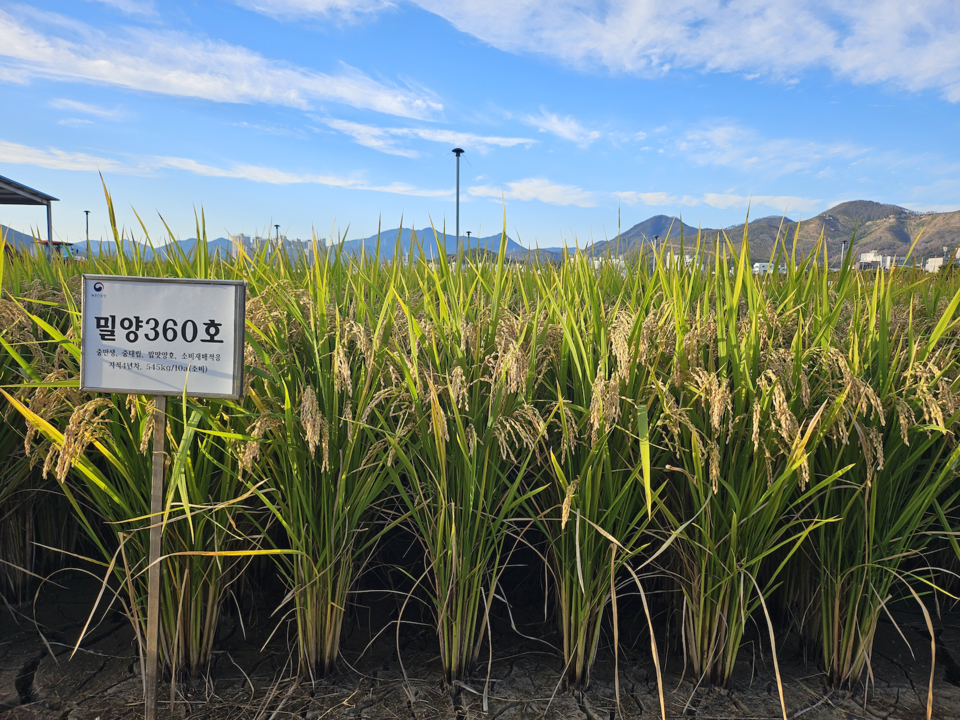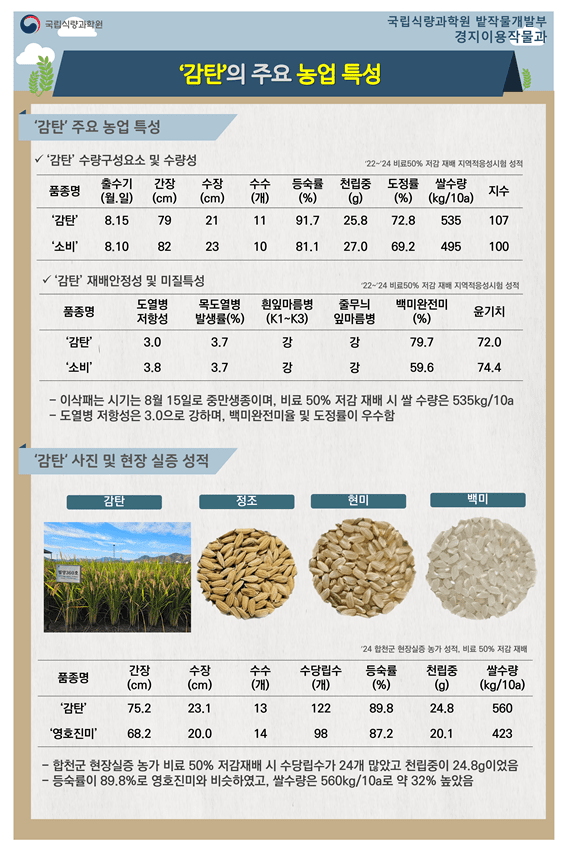August 18 is designated as ‘Rice Day’ to promote rice consumption and the value of the rice industry. Rice, as a staple food in Korea, has played an important role in rural economies and food security over the years.
The Rural Development Administration announced that it has developed a low-carbon rice variety named ‘Gamtan,’ which reduces methane emissions while ensuring quality and productivity. With the increasing challenges of abnormal weather, pests, and greenhouse gas emissions, there is a growing need for the development of sustainable rice varieties.

‘Gamtan’ was developed through traditional breeding methods, not genetic modification. The variety incorporates the naturally occurring ‘gs3’ gene, which reduces the emission of methane-inducing substances and also increases grain size.
Compared to the existing variety ‘Saeilmi,’ ‘Gamtan’ reduces methane emissions by approximately 16%. If fertilizers are reduced by half, the reduction increases to about 24%. Generally, reducing fertilizer usage can decrease yields by 15-20%, but ‘Gamtan’ only shows about a 7% reduction, indicating minimal productivity loss. Methane emissions can be reduced simply by switching varieties, without the need for additional equipment or management.
This research was published in the international journal ‘Nature Climate Change’ (2023), drawing global attention.
The Rural Development Administration is also promoting the ‘Green Rice’ project, which includes ‘Gamtan.’ This project aims to minimize resource inputs and achieve carbon neutrality by using rice varieties that require less chemical fertilizer and emit fewer methane emissions. The Green Rice varieties aim for a 50% reduction in nitrogen fertilizers, an 11.3% reduction in greenhouse gases, and a yield of 500-600 kg.

‘Gamtan’ also received high scores in taste evaluations. It ranked second for taste among the 12 species tested for regional adaptability in 2023, making it suitable for eco-friendly farming due to its resistance to diseases such as leaf blast, bacterial blight, and stripe virus.
From this year, field demonstration research is being conducted in Buan, North Jeolla Province, Cheongju, North Chungcheong Province, and Yecheon, North Gyeongsang Province, for two years. In September, a presentation meeting will be held to gather user feedback, expand seed distribution centered around eco-friendly complexes, and promote market expansion and farmer income improvement in connection with low-carbon certification and high-quality branded rice strategy.
Jeong Byeong-woo, head of the Rural Development Administration’s Crop Development Division, stated, “’Gamtan’ is the world’s first methane-reducing rice variety developed through traditional breeding using a specific gene. We will continue to develop varieties and research technologies that can achieve carbon neutrality, food security, and environmental conservation.”